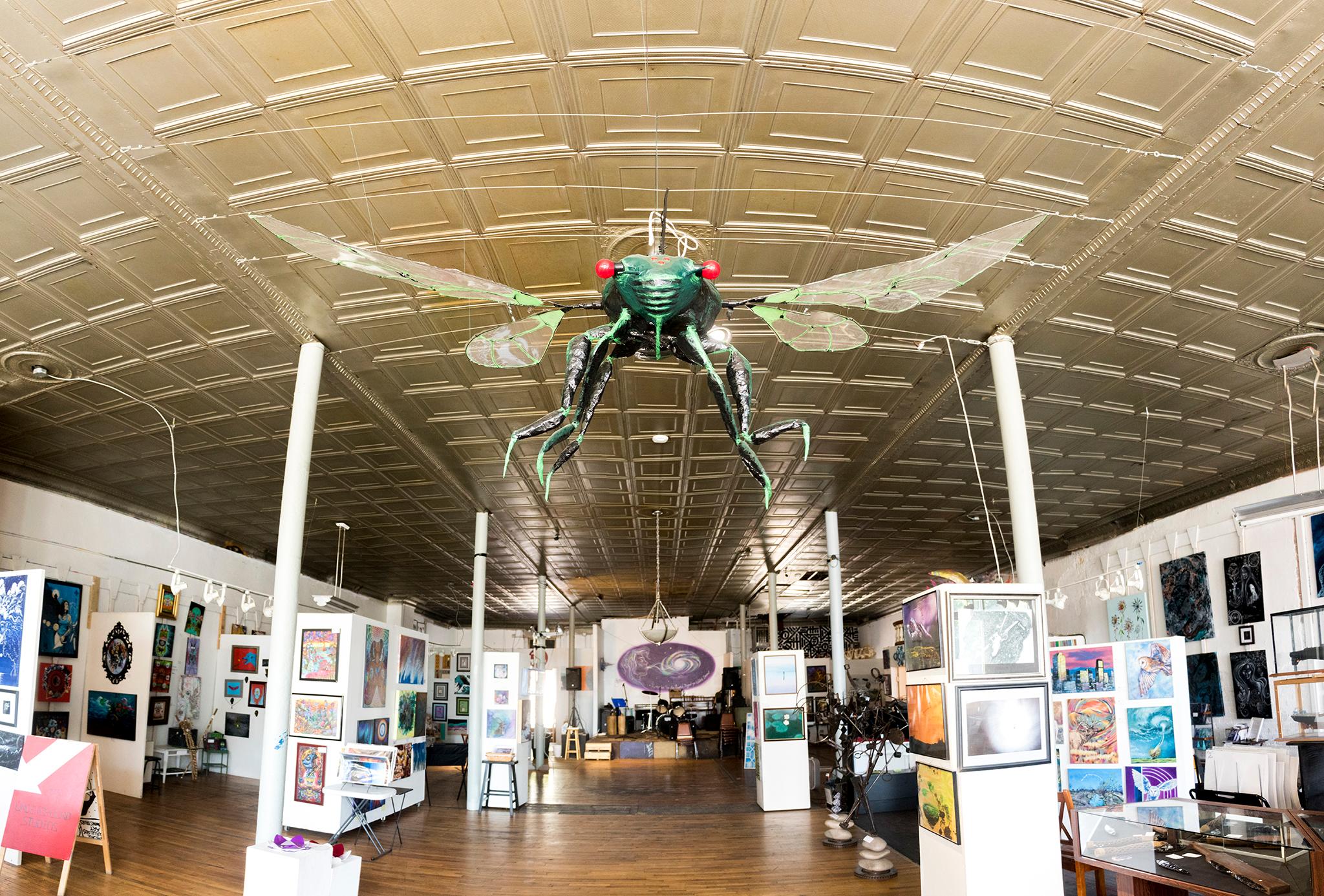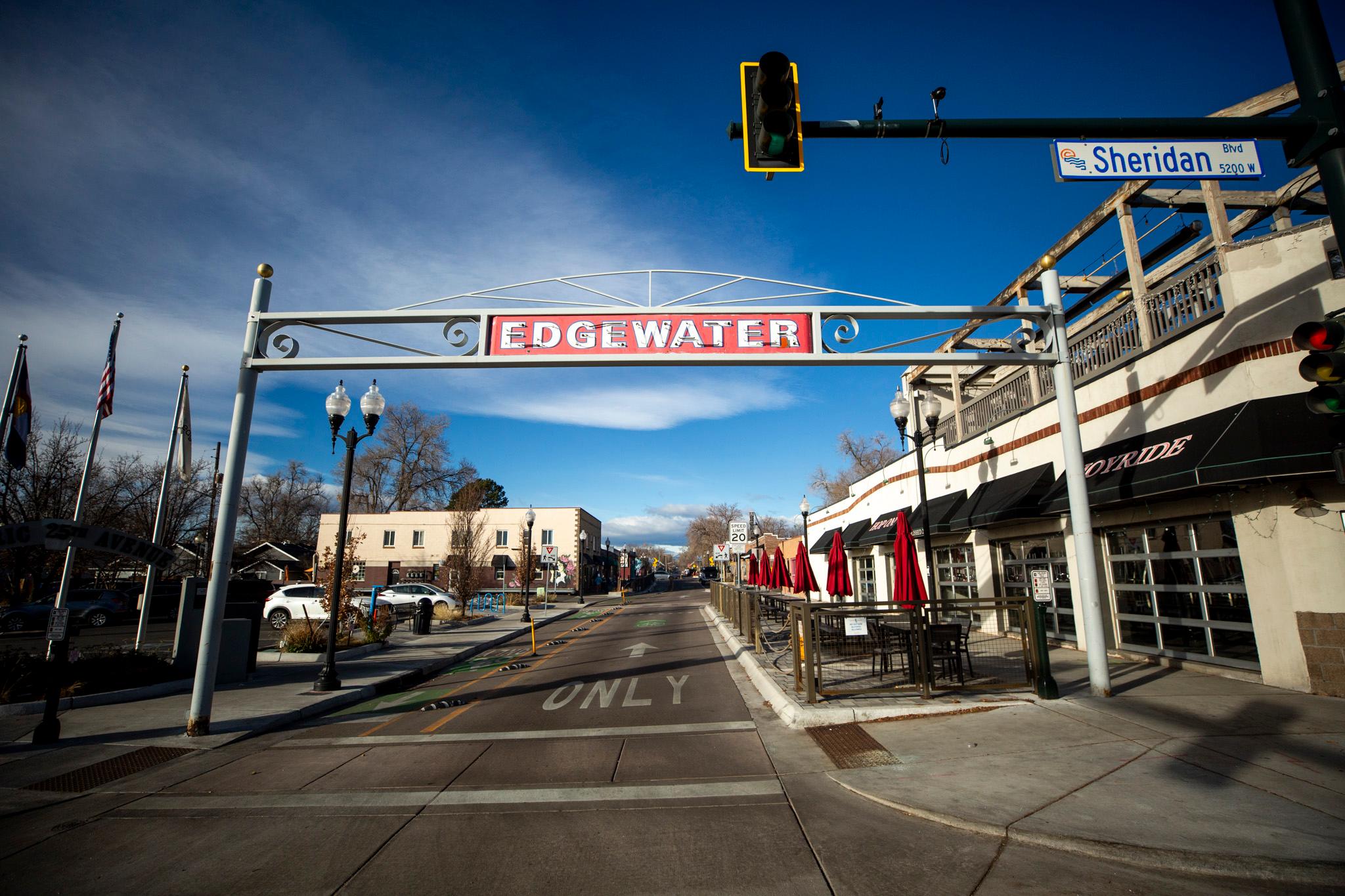There are a quite a few galleries along Santa Fe Drive, but there aren’t many quite like the Denver Arts Society.
Denver Art Society's gallery — dotted with imperfections like a slight warp in a wall or flicker in a light, filled with art in different mediums, a full music performance stage and a basement full of studios — stands out in the new Santa Fe landscape because of how they operate.
"We're here for artists, by artists. No one is here to make money. We're all volunteers to support local art and music," board president Ilya Narizhnyy said.
Unlike many of the posh galleries Narizhnyy has noticed are starting to overrun the area, DAS focuses on emerging artists, and the group revels in highlighting the talent in the less polished parts of Denver's art scene. Artists invited to show art and hang out are chosen less for their name recognition or artistic accolades and more for their commitment to the co-operative. Artists who want to participate are required to attend group meetings once a month and put in some volunteer hours at the gallery.
Narizhnyy described some of the many barriers that new artists encounter when they seek to enter Denver’s quite impressive art scene. "They can go to a bunch of galleries here and get rejected because it’s pretty exclusive in most of the places if you don't know the gallery staff or if your art is not just really good, it's pretty tough to get a place in some of these galleries. Some of them are booked like a year in advance with shows," Narizhnyy said.
DAS’s curation system knocks down many of these hurdles. Jason Bushey, a resident artist, said it gives interested newer artists an already established artist community, which can be invaluable for someone early in their career. That was the case for Tim Valdez, who rents space in the gallery and is looking to enhance his skills at the studio enough to eventually transition out of his nursing career.

The gallery is focused on maintaining a space for emerging artists around the Art District on Santa Fe in the quickly gentrifying city.
"I'm able to rent a studio. They have a suggested member fee, but for artists that are struggling to pay rent — they can't pay," Valdez said. He noted that in an expensive city like Denver, sometimes artists are simply struggling to pay the rent and DAS is understanding of that. Sometimes the studio even has a donation based expenses for their exhibiting membership fees, which are already quite low for galleries in the area.
“What we really want is for them to volunteer [a few] hours a month and come to the co-op meeting and to the curation meeting and if you do that, you're able to hang art," Valdez said.
It’s this type of focus on the artist experience that helps DAS be a uniquely comfortable place for artists of all kinds as the arts scene in Denver becomes more exclusive and elitist, according to Narizhnyy. They are particularly proud of the fact that they do not censor the artists and are open to any type of art, as opposed to many galleries that focus their work in a particular direction.
That cooperative and inviting vibe is one of the reasons artists choose to work with the society year after year.
"A bunch of our members have either home base here, they have a studio and branch out to other galleries, but they see this as their stable artist community," Narizhnyy said. He also said that many artists eventually spread their wings outside of DAS but still keep their base camp there.

"We're not a typical gallery where you come show your work," Bushey said. "We are community-oriented, so we are sort of this family of people."
The gallery is entirely volunteer-run. The artists pitch in to handle the administrative stuff like staffing the front desk and organizing outreach. They’ve had to learn how to financially manage a gallery space in a city where real estate is increasingly competitive.
The first step they took toward securing their future in the area was getting organized, according to Narizhnyy. During his time as president, he's used his expertise to create a stronger financial portfolio that detailed how they are currently bringing in revenue and how that amount can increase over time. He also made other members of the board more aware of the steps they could take in order to help the organization become more financially stable — while still staying focused on getting artists paid.
The increased level of organization allowed them to apply for grants, like the $5,000 they received from Meow Wolf.
"We used that to update our electrical systems," Narizhnyy said. That was especially important as DIY arts spaces came under intense scrutiny following a fire at an arts space in Oakland in 2016 killed 36 people.
They also signed a 10-year lease with their landlord so they can efficiently plan for the future.
"We're going to be here through the gentrification of Denver," said Narizhnyy. "We're here to stay."
No matter how much the neighborhood and city change during that time, they still want to keep the essence that allowed them to become such a fantastic studio in the first place, Narizhnyy said.
"Organizations like ours are starting to get shut down and replaced by the big, fancy, shiny, mainstream art galleries. For us to be able to survive, that is really huge for the Denver art scene."
CORRECTION: Due to a source error, this story originally had incorrect details about the cost of membership at DAS. The details have been updated and corrected.













